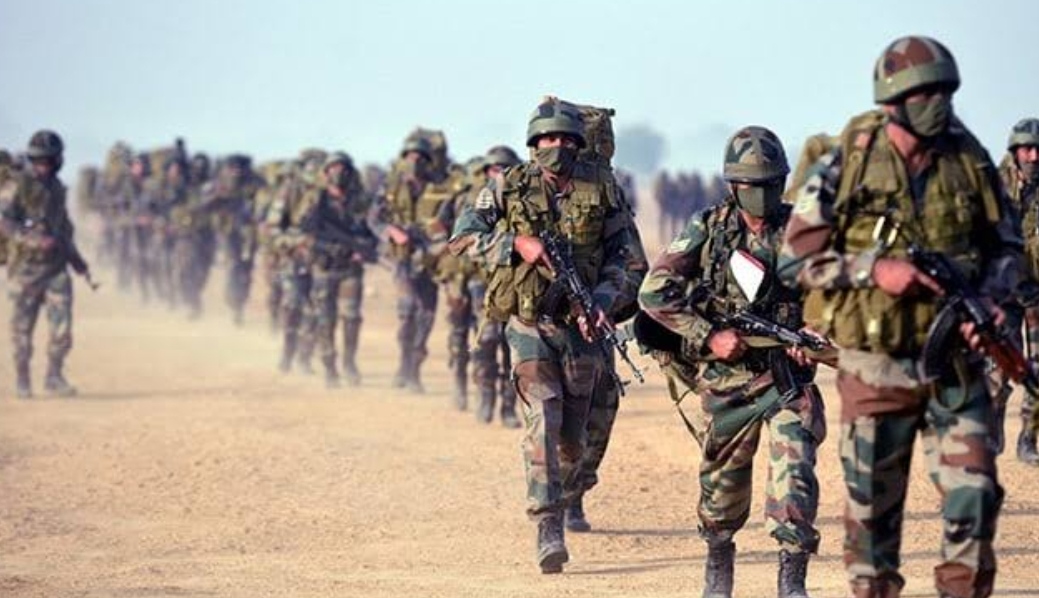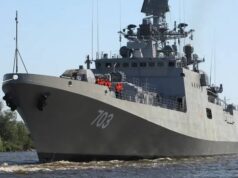Games Services Play
(Exercise In Inter Services Cooperation)

Ed: The Indian Defence Services have been operating together quite closely right from 1947 onwards, especially during Operations. Though during peace time they do indulge in lots of GAMES which to a Civilian would look like, as if they are on opposite sides of the Radcliffe Line. The article below was written by the Officer for the OWL Magazine while undergoing the Staff College. The request was made by an Air Force Officer who was in the Editorial Team.
Even the present CDS was doing the same course along with the previous Air Chief, ACM B S Dhanoa. In fact Group Captain T P Srivastava, Retd who has recently written a most scathing article on General Bipin Rawat’s comments on IAF ‘s role, was an instructor in Staff College during the period. It seems the IAF was unable to teach the Army “ properly “!!!!!
The media is unnecessarily hyping the remarks of Various Service personnel, serving and retired, over the Theatre Concept. The Services love to play the GAME but they will still implement the Theatre Concept. So civilians need not worry and the Politicians presently entrusted with Higher Defence Management must ensure that Babus of the Ministry of Defence remain spectators only.
By
Maj Awadhesh Kumar
After National Defence Academy, the next dose of ‘services cooperation’ is received at the Defence Services Staff College. The potent ‘medicine’ (50 per cent of the syllabus is on inter-services matters) is obviously given with painkillers – jokes and digs at each other – specially patented by each Service Training Team. However, there is a danger that the ‘medicine’ may not remain effective till the next due dose at the National Defence College. Hence, here is a suggested naturopathy exercise. All ranks are welcome to try this out, however, only under close supervision of DSSC trained experts, for ‘medical’ reasons.
The exercise is a game of skill played between teams selected from the three services. There are different versions, but the naval-air force version is still under tests at HQ FORTAN, HQ FONA and HQ MAO. Similarly, the army-navy version is under evaluation after extensive field tests, at HQ IPKF and HQ FORTAN. Hence, for the present we shall confine ourselves to the time tested army-air force game, though the rules for the other two versions should not be very different.
In the ‘move’ mode of this game, the army team may be represented by an infantry, parachute or ASC (Air Maint) battalion and the air force by a transport or a helicopter squadron. In the ‘strike’ mode, the air force is represented by an ADV HQ, TAC HQ, Wing HQ and fighter squadrons (GA); and the army by its various HQs down to a Bn HQ. Due to several restraints we will confine ourselves only to the ‘move’ mode of this game.
The game involves the movement of the first team by the second and the progress is subject to a series of handicaps. An ‘umpire staff’ initiates the play. To achieve maximum surprise, the unit to be moved and its destination must be selected at random.
Also, regardless of the actual available notice, the two teams are to be informed only at the last possible moment for the move to remain feasible. Once the sign to commence is given, each team should endeavour to score points off the other till either the move is completed, or the Air Force runs out of serviceable aircraft or the army runs out of troops.
The army may give walkover by moving on vehicles (representing aircraft/helicopters). Points are awarded on each development in the game.
Hundred points are granted to the army if the emplaning is from an airfield within convenient distance from its location. The score is doubled if this airfield is devoid of basic facilities (for transport aircraft) and 50 bonus points if the day is a Saturday. The Air Force likewise may gain 100 points if the emplaning is from transport squadron’s home base. The score will be increased by one point for each km by which the army’s road journey exceeds the subsequent air move.
The payload quoted by the army planning should in no way resemble the load actually brought to the aircraft for loading and the manifest should be so worded that no formal reproach is possible. Should this discrepancy be identified by the Air Force then 50 points should be granted to it. However, 100 points go to the army if the load is actually delivered at the other end. The army will be permitted to load the aircraft but the air force may apply a handicap by insisting a responsibility for supervision. The army will score 50 points for each aircraft fully loaded on time and about which the loadmaster or the captain is unable to find a valid reason for demanding reloading or relashing. The air force may on the other hand, allocate troops to individual aircraft to ensure that no chalk is ever coincident with any recognisable sub unit; One point can be claimed for each man thus separated from his Platoon.
Every soldier must be briefed at platoon, company and battalion level about the emplaning/deplaning and flight safety rules. Twenty-five points to the air force if the procedure is repeated by the Air Transport Liaison Officer and next by an air force safety officer. Further, the air force can try and score 100 points for each aircraft where the loadmaster insists and is able to carry out another briefing followed by a rehearsal. Extra 50 points may be garnered for each officer of the unit made to attend the rehearsal and 500 points if the CO is also roped in.
Army on the other hand will score 10 points for each soldier who is able to board the aircraft with bayonet fixed, five points for not putting on the safety belt during take off (500 points in case of a paratrooper who is able to board the aircraft with a wrongly fitted reserve chute and is detected only after take off). A further 50 points are granted if a soldier Is able to smoke within 10 m of an aircraft and this will be tripled if he is able to borrow the matchbox from one of the aircrew or the ground technicians.
Air Force will be penalised 25 points for timely take off of each aircraft. However, points may be recouped if an aircraft is able to turn back due to a ‘technical’ snag. Points earned will be tripled if the particular aircraft lands back at some other base where no facilities exist for army troops on board. Twenty-five points per hour, can be then scored for each hour of delay and this can be doubled if the aircraft is carrying the battalion HQs. Similarly in case of Para supply drop, 10 points for the air force for every load falling outside the drop zone, 100 points if the aircraft is unable to carry out the drop even after several circuits. A bumper 500 points for dropping on a totally different drop zone. Otherwise, 100 bonus points for each commander (platoon upwards) being separated from his command.
In case take-off is not possible due to weather or any technical snag, then the air force may seek a bonus of 150 points if it can persuade the army to remain in the airfield all day on the pretext of imminent departure (points doubled if it happens to be the home base for the transport squadron). A similar bonus for the army if take-off is postponed for next day by relentless persuasion (double this if it is not the squadron’s home base). Both army and air force may issue conflicting orders at any stage prior to departure. Two hundred points will be awarded for any major amendment (50 points for minor) so timed that the other team’s internal administration is held to blame for ignorance of a change in time, day or airfield of departure.
On arrival at the destination both the teams have a further equal opportunity for scoring. Five points to the air force for each minute of extra delay imposed on army troops to leave the aircraft after it has halted at the unloading apron. Fifty bonus points if this area and the waiting army vehicles happen to be on the opposite ends of the runway. Air force has a chance of earring 50 bonus points if the Base security officer is able to halt the army vehicles at the main gate on some pretext or the other. Base operations/ATC can try and add 50 points by giving the army unit sending the vehicles an ETA which differs from actual arrival by more than an hour. Similarly, the army can score 20 points for every vehicle which is able to drive on the runway or cross it from an unauthorised area; one point for each piece of litter left near the runway and two points for each bird attracted by it.
After arrival of the last chalk, the points are totalled and the winner is declared. However, the game is one of a series and played throughout the ‘peace’ season. Though, by mutual agreement (unwritten law of the game), this game of “cooperation” is temporarily suspended during the war season. It is promptly resumed when the ‘war’ season is over. In case of partial failure of either season, the game is suspended in the ‘war’ area but carried on in the ‘peace’ area. (This observation was made during the period Oct 87 – Mar 90 OPERATION PAWAN in Sri Lanka).
Author’s Update: Since 1991 there has been much change and refinement in the above GAME. FORTAN a very small club team was given TEST status ( and just like Sri Lankan Cricket Team is now showing potential to winning the World Cup ). Also a new Board of Control has come up called HQ IDS and of course the “ BCCI Chairman “ in the form of Chief of Defence Staff.




